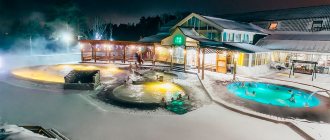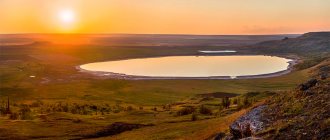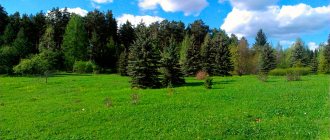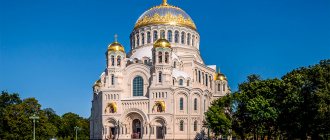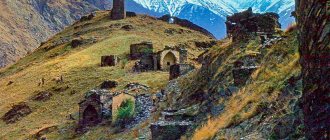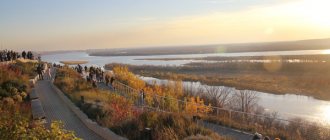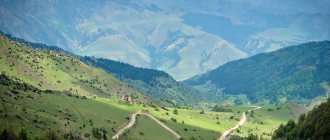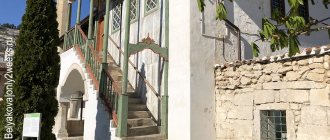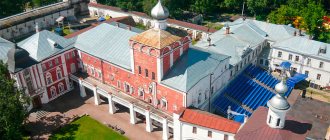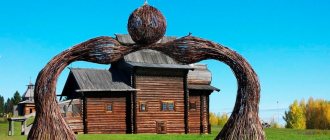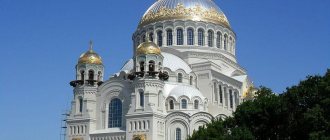If you look at a map of the European part of Russia, it is clearly visible that many cities are located on the banks of the Volga. This is understandable: trade routes passed along the rivers, and the location on them provided an advantage for trade. Most cities became major centers of provinces. Some were less fortunate and remained small. But sometimes size doesn't matter. The tiny town of Myshkin in the Yaroslavl region, whose fame is immeasurably greater than the number of residents, fits perfectly into this definition.
A little history
The first mention of Myshkin was found in 1605 in a charter for the village of Myshkino, Yaroslavl district, issued to the boyar Danila Mezetsky. By the end of the 17th century, the village became part of the Moscow Chudov Monastery. This period especially contributed to its development and the appearance of many outbuildings in it.
In 1764, Myshkino was transferred to the department of state economy and became a settlement. And in 1777, by decree of Catherine II, Myshkin received the status of a city and county center. By the middle of the 19th century, Myshkin became a major trade center, which hosted two annual fairs - Vvedenskaya and Borisoglebskaya. A merchant class appears in the city. Largely thanks to their patronage of the arts, beautiful houses are being built in Myshkin, there are many shops, barns, and warehouses.
Education is popular in the city. Schools and gymnasiums are opening. In 1875, a public library appeared. At the beginning of the 20th century, there was a noble club, a museum, a theater, an art gallery, a pedagogical college, a weather station, and a newspaper published here.
This flourishing of cultural and social life was short-lived. 1924 was the last year for Myshkinsky district. And in 1927, Myshkin lost its city status. In addition, in the 40s and 50s, during the construction of the Volga dams, the lower part of the city went under water.
In the 70s, a gas compressor and oil pumping pipeline station was built in Myshkin. The village began to develop and become more beautiful. In 1991, it was returned to city status.
The city's public and authorities, directing their actions to restore its former glory, revived and opened new museums, an art gallery, and built hotels. The city streets have retained their ancient appearance and attract numerous tourists.
And the locals provide them with a warm welcome, beautiful views, and delicious dinners. This unique small town on the high bank of the Volga is called “the frozen antiquity of Russia.”
Myshkin: location, description
The city has a very picturesque location on the high left bank of the Volga, opposite the place where the Yukhot River flows into it. The ancient settlement has its own characteristic color and originality.
Years go by, and the provincial town, built up with two-story buildings, has remained virtually unchanged since the beginning of the 20th century, but still surprises with its unrealistic patriarchy and the cordiality of its inhabitants - the mousers (as they called themselves).
The name of the city, according to legend, appeared in honor of the mouse, which was able to force the ruler to wake up and, thereby, save him from a snake attack. The ruler erected a chapel in gratitude, and years later the city of Myshkin grew up around it.
Map of the city and attractions of Myshkin
Myshkin, the attractions in the photo with a description of which are replete with hundreds of images of a cute animal, is considered the “mouse” capital of the world. Tourists can expect a huge number and variety of forms of miniature animals. In terms of the number of museums, the tourist center can compete with some million-plus cities that are several times larger in population.
Sights of the city of Myshkin
Most tourists visit Myshkin on a cruise on the Volga or an excursion tour along the Golden Ring. They visit the town with an area of only 5 sq km for several hours. However, their program does not allow them to cover many interesting city exhibitions. And it is impossible to penetrate the patriarchal spirit of old Russia during this time. Myshkin deserves better. We will try to tell you in this article what to see in Myshkin, enjoying the city on your own, plunging into its leisurely life.
Chistov Estate
The estate, covering an area of several hectares, is a complex of buildings, of which the two-story manor house stands out. It is decorated with a columned mezzanine built above the second floor. Most of the buildings were erected in the classical style under the founder of the merchant dynasty Vasily Ivanovich Chistov in the first half of the 19th century.
The Chistovs were large grain traders and made a great contribution to the prosperity of Myshkin. Already an enlightened heir, Timofey Vasilyevich Chistov led a social life, arranging magnificent receptions in the mansion. As the mayor of the city, he received the Tsarevich, who soon became Emperor Alexander III, in his pink hall.
Patriot of the City, T.V. Chistov, in his will, donated the estate to the city hospital, which was housed there for about 100 years. In the early 90s of the last century, the famous library collected by the bibliophile Opochinin moved to the main house.
Now the estate is one of the important attractions of Myshkin; several museums are located here.
Stolbov's mansion
The mansion was built at the end of the 19th – beginning of the 20th century by one of the richest merchants of the city, Stolbov. Consists of two buildings connected by an arch. The house was innovative for its time - shops were located on the ground floor, and the second floor was used as living space.
Now in one of the buildings on Ananyinskaya Street there is a House of Children's Creativity, and in the other - the Prosecutor's Office.
House of the Grobov merchants
It is also considered a landmark of Myshkin. The Grobov brothers lived in this house, having become rich by marrying the daughters of a merchant. The house is two-story, located on Nikolskaya Street, well preserved. The nice building, painted in coral color, is well refreshed by the white trim of the windows.
Sitzkov House
The famous Sitzkov family made a fortune sailing ships along the Volga. Having entered the merchant class, they were actively involved in charity work. The main legacy left from them is a modern city park, which is also called, with a slight distortion of the surname, “Sitsky Garden”.
The park was once part of the Sitzkov (Sitsky) estate, adjacent to a wooden manor house. Somewhat later, a stone house was built, which has survived in modern decoration to this day. In the park there are trees over 100 years old, planted during the time of the old owners.
Tyutchevsky house
There is a house in Myshkin that once belonged to the Tyutchev family. The poet himself visited here twice - during the War of 1812 and at the end of his life. And his great-grandson lived in the house all his life.
Part of the building is dedicated to exhibits telling about the Tyutchevs. In 2008, the Academy of Local History began its work here. Within its walls, they continue the wonderful traditions of studying local history, which began in the 18th century. Lectures and seminars are regularly held for teachers, tour guides, and schoolchildren. The Tyutchev House can be called Myshkin’s humanitarian center.
Mouse's chambers
The tourist complex “Myshkin Chambers” is a new attraction of the city of Myshkin. In 2008, a real two-story palace was built for him in the style of the surviving merchant mansions of the city.
“The Mouse Palace,” as the object is also called, immediately became a center of attraction for tourists. It is mainly aimed at children. The mansion is home to a family of mice with the Mouse Tsar. The building has 5 large halls; a guided tour through them lasts about an hour. The group is accompanied by courtyard girls; the guards will ask for a password. After pronouncing it correctly, the guests will be greeted by the king and queen, and then there will be a walk along mouse paths with a visit to an exhibition of bears (toy) and a zoo of mice (live).
For adults, the Myshkin Chambers offers a tasting program of local drinks, “Pour it Myshkin style.”
Kukhmisterskaya Vinogradovs
Rich Trans-Volga peasants, the Vinogradovs, appeared in Myshkin in the 70s of the 19th century. They launched active activities. In one of their two-story houses, a kitchenette appeared on the ground floor - an analogue of a modest restaurant, which became popular among the townspeople.
At the end of the century, one of the owners’ relatives came to Myshkin from St. Petersburg. In the capital, he was a cook at the imperial court. Thanks to his culinary skills, the kitchen turned into a high-level establishment.
1918 stopped its activities. The building was nationalized and transferred to the hospital. During the years of Soviet power, extensions were made to it.
Volga embankment
In 2014, work on the Volga embankment was completed, and it began to worthily represent the city to tourists. The promenade has been paved with high-quality tiles, asphalt has been laid, in the evening it is illuminated by modern lanterns, and an openwork metal parapet has been installed along its entire length.
Walking along the embankment, you can admire the views of the Volga and the city, the pier with docked cruise ships. And walk to various attractions of the city of Myshkin. Here you can also buy local souvenirs.
Myshkin embankment is currently one of the city’s decorations. From here the ferry runs across the Volga. And from the pier you can go on a cruise along the Volga.
Victory Memorial
On the 60th anniversary of Victory in the Great Patriotic War, a square appeared in the city, named in honor of the significant event. Its center was the new Victory Memorial, located on an area of 1,500 sq. m.
The basis of the composition was a bronze statue of a soldier returning home. The Eternal Flame burns at his feet. Behind, on a semicircle of red granite, there are slabs with the names of Myshkin residents who did not return from the war and the Book of Memory.
The square turns into an alley leading to the Volga. At the end of the alley there is a rotunda, creating a surprisingly harmonious completeness to the Memorial.
Sita Garden
The city park of culture and recreation is the legacy of the wealthy Sitzkov merchants, to whom it once belonged. Currently, this is a completely modern, well-equipped vacation spot. There is a pond on the territory.
Children enjoy spending time here on the equipped playground. Elderly people relax sitting on benches. For those who are hungry, there are places to grab a bite to eat. In the evening, young people flock to the dance floor.
Near the park there are most of the old merchant houses and an art gallery.
Museums in Myshkin
The city of Myshkin has an extraordinary number of museums. Can be found for adults, children, and family viewing.
Mouse Museum
The museum, which contains 11 thousand symbols of the city - mice, is located in a small old mansion. Here you can see exhibits made from various materials, made both in Russia and in many countries around the world.
The only mouse museum in the world began to be created in 1990. His fame spread first throughout Russia and then went far beyond its borders. Exhibits are sent from everywhere for the exhibition, even from Australia. Famous people made gifts to the museum: academician Likhachev, poet and bard Okudzhava, master of detective stories Ustinova. Many of the visitors also bring gifts, for which the donor is given a certificate of honor.
The oldest copy of the exhibition was made back in 1908. Mice here are distinguished by names. Guests are greeted by Grandma, the famous mice are Ivan Kapitonovich, Petrovich, Fedor. We haven’t forgotten the computer mouse, which has a special section dedicated to it.
The museum is one of the main attractions of the city of Myshkin.
Museum of felt boots
The felt boots museum is one of the most popular in the city. It is small, located in the building of the Chistov estate. Appeared already at the beginning of the 21st century. Its exposition presents one of the most common crafts of the Yaroslavl region. Here you can get acquainted with the technology of hand felting. There are also machines on which felted shoes are produced industrially.
Next to traditional felt boots, you can see designer products for fashionistas. Models with heels and rollers are available. The museum also has various felted items, such as an airplane, a cactus, and a wall panel. Well, a lot of mice. You can also buy felted products here.
Flax Museum
A very small flax museum is located across the wall from the felt boots museum in the wing of the Chistov estate. Its informal title is “How a Shirt Grew in a Field.” Here they will tell and show not only how the agricultural crop popular in Russia was grown and processed. But also how they worked at the spindle, made yarn, and received fabric on a loom.
To make a museum interesting, you need to watch it with a story from a guide, who reveals a lot of unexpected things to visitors. For example, he will tell you “why in Rus' men sowed flax in shirts without pants” and “what rituals they performed using flax.” Those interested can take part in master classes on making linen dolls.
Peter Smirnov Museum
The most successful entrepreneur from Myshkin was vodka producer Pyotr Smirnov. He was a serf, but after the abolition of serfdom he received his freedom and left for Moscow. Here he quickly made a career. By the end of the 19th century, 5 thousand people worked at its factories. The quality of the goods produced by Smirnov was so high that he was one of the few entrepreneurs who received the right to produce products with the Russian coat of arms.
The life story of the famous fellow countryman will be told in the museum located in Smirnov’s house. In the exhibition you can see antique bottles, product labels, glasses, glasses. There are personal belongings of members of the Smirnov dynasty.
A special section is dedicated to the great-grandson of Pyotr Arsenievich Smirnov, Boris Alekseevich, who continues the family business. The museum is supported by Smirnov’s descendants, who gather in Myshkin for annual meetings.
Museum of Peasant Architecture
It is called “Museum of Peasant Architecture of Small Forms” and will appeal to lovers of antiquity and ethnography. On its territory are exhibited wooden objects built by peasants in the Yaroslavl province and beyond.
Here you can see barns, log buildings, there is a pavilion from the park of a merchant estate, windmills, a beacon keeper's house, and a chapel. You can go into the bathhouse and visit a real forge, where they will forge a souvenir for you.
Museum "Myshkinsky Samokhod"
In 2005, a museum of ancient technology appeared in Myshkin, the exhibits of which harmoniously combine with the patriarchal city. For a fully completed exhibition, old peasant huts, a blacksmith shop and other household items from a bygone era were brought to the museum's courtyard.
The museum began with the famous lorry and ZIS-5, and now it contains about one and a half hundred samples of equipment. There are ancient river longboats, a sausage-making machine, locomotives, a disinfection and shower unit, a school bus from America, and an American Willys jeep.
The museum hosts the annual provincial festival of retro technology with the participation of cars from other regions.
Museum of the Capital of Pilots
In those days when there were no numerous dams on the Volga that made the river so full of water, ship guides were very much valued. Myshkin was famous for its pilots, who knew the fairway of the Volga not only near the city, but throughout the entire navigable length. The pilots were paid well, many of them, having become rich, became merchants or started their own businesses.
A museum dedicated to city representatives of such an important profession appeared in Myshkin back in 1966. Here you can learn about the specifics of pilotage, about the city dynasties of pilots. The exhibition also includes items related to their work - steering wheels, bells, anchors. A significant part of the museum is dedicated to the history of Myshkin and its famous townspeople.
Museum "Makhaev Dvor"
The museum created the complete illusion of transporting its visitors to a 19th century merchant's house. One gets the feeling that the owners of the house have just left the premises and will return soon. In addition to the rooms where the owners lived, the furnishings in the servants' room, the janitor's room, the clerk's apartment, and rooms for guests were recreated. On the second floor you can see the room in which the merchant's store was located.
The creator and guide of this museum, G.I. Mahaev is a descendant of the merchants to whom the museum is dedicated. Having lived his life in St. Petersburg, upon retirement, he returned to the city of his ancestors, where he restored his ancestry. And he tells the museum visitors wonderfully about the past.
Museum of Living Crafts
One of the “fresh” attractions of Myshkin. The museum appeared in 1996. It recreates the ancient crafts for which the city was famous. One of its founders was V.V. Terkin. Being a skilled blacksmith, he considers the task of his “craft settlement” to be the preservation of traditional crafts for future generations.
The museum hosts the annual festival “Crafts of the Yaroslavl Region”, which is attended by craftsmen from other regions. The museum has a forge, pottery and glass workshop. In front of the audience, craftsmen create their products. Those interested can learn the basics of the profession at master classes.
Puppet Museum
The Olga Pavlycheva Doll Museum-Gallery presents an extensive collection created by the owner of the museum herself. The first dolls appeared back in the 90s. Over time, they were made from salt dough, plastic, and papier-mâché. Depending on the material, the dolls’ character traits appear. Olga also created her own technology for the production of products.
In the exhibition you can see a wide variety of dolls in various clothes, sewn by the craftswoman herself. Part of the museum is reserved for doll miniatures, where many objects need to be examined almost with a magnifying glass. There are a lot of mini mice here.
The master’s works are known in many countries around the world, are in collectors’ collections, and have become winners of exhibitions more than once. At the museum you can buy a doll or have one made.
Museum of Retro Technology
The Old Garage Museum was founded by collector N. Lushin and the retro technology club. There are about 80 exhibits on display outdoors, including trucks and cars, machines for harvesting crops from fields, river boats, and military equipment. Nice collection of Soviet mopeds and bicycles. You can ride around many of the exhibits and take a photo.
Orthodox Museum Myshkin
The museum was opened in 1999 by local historian and enthusiast S.V. Kurov. At first the exhibition was dedicated to the St. Nicholas Church. Over the years, the museum has been replenished with unique documents and family archives. From them you can learn interesting facts from the history and life of Myshkin and about the townspeople, especially when the founder of the museum himself tells you. Today the collection is called the “Historical and Cultural Museum of Family Collections of the City of Myshkin.”
The museum has several sections, each of which covers a different topic. A significant exhibition is dedicated to the merchant A.P. Berezin, who became the mayor of St. Petersburg and invested a lot of personal funds in the construction of churches. There are materials dedicated to outstanding clergy of the Myshkinsky district.
Extensive material has been collected about the region before the appearance of the Rybinsk Reservoir, about the settlements that disappeared forever under its waters. The school section tells about education in tsarist times; its exhibits always arouse the interest of students.
Museum "Salt in Myshkin"
Myshkin in ancient times was one of the salt centers. Not far from the city, in the villages of Soltsy and Usolye, salt was mined. The fishery made a significant contribution to the city budget, and many residents of Myshkin were associated with it. The important trading city of Myshkin skillfully sold the mined salt, because local merchants were very enterprising.
In addition to telling stories about salt, the museum displays an extensive collection of salt shakers made from different materials and is happy to accept them as gifts from visitors. The mini-museum is located in an old log hut.
Museum of the Uchem Region
The main museums of Myshkin are part of an association called the People's Museum. One of its components is the museum of the Uchem region located beyond the Volga.
To get to the museum, you need to cross the Volga by ferry. The village of Uchma with its 30 inhabitants is located at the confluence of the Uchemka River with the Volga. In the Middle Ages, the Byzantine monk Cassian the Greek arrived here. Through his efforts, together with the monastic brethren, a monastery appeared here - the Kassianov-Uchemskaya hermitage.
The monastery was blown up in the 30s of the last century. And in the 1940s, the area was flooded by the waters of the Rybinsk Reservoir.
Part of the ruins protrudes from the water while on the island. Here Uchemsky forester and local historian V.G. Smirnov erected a memorial cross. He also created the museum of the Uchemy region, which is dedicated to the ancient village of Uchemy and the monastery. On the territory of the museum, its founder, being an excellent carpenter, restored a number of village buildings and erected a chapel. And his house can be called a real mansion. These are the people who live in these parts.
Myshkin Art Gallery
The city's art gallery is located within the walls of the former women's gymnasium. Unfortunately, the paintings from the collection of her predecessor, which appeared in Myshkin back in the merchant era, disappeared without a trace in the fire of revolutions and civil war. The 9 halls of the gallery, which opened in 1991, display works by contemporary artists.
The main part of them is represented by paintings by Honored Artist of the Russian Federation G.A. Tatarinova. He worked in the landscape genre and during his lifetime donated 250 of his canvases to the city.
The gallery halls host exhibitions of contemporary artists, displays of works of decorative and applied art, and photography exhibitions. A separate room is reserved for works donated to Myshkin by craftsmen from other cities.
What to visit with children?
Myshkin is a city for the whole family, but not all attractions and museums will be equally interesting to both adults and children. So that children do not get bored, but have an eventful and educational weekend, it is necessary to create a list of activities that will definitely not leave them indifferent.
A relaxed excursion at the Mouse Museum is conducted by schoolchildren, so children will be willing to listen to such guides. They will be told about the emergence of the city, the origin of its name, many interesting stories about mice, folk art and literature.
The Mouse Chambers complex has a similar theme, where children will immerse themselves in a real mouse fairy tale. Upon completion, everyone has the opportunity to purchase a themed souvenir as a keepsake.
After getting acquainted with the huge variety of mice, you can go nearby to the exhibition of exhibits “Myshkinsky Samokhod”. You won’t be able to buy souvenirs here, but kids will be able to get acquainted with numerous rural vehicles, trucks, and cars.
Also on display are unique exhibits: a sausage and lemonade machine from the 19th century, antique radios and a steam car.
Temples in Myshkin
When making a plan of what to see in the city of Myshkin in 1 day, you should definitely include a tour of the city’s churches in the list.
St. Nicholas Cathedral
The oldest church in the city was built in 1769 by the St. Petersburg merchant Berezin. It is often called the Cathedral of St. Nicholas the Wonderworker. This name is associated with the Berezin family icon.
The father of the temple builder was a poor peasant from the village of Eremeytsevo, located not far from Myshkin. In difficult times, he had to pawn the icon of St. Nicholas the Wonderworker in a city tavern. A quarter of a century later, his son, who had become a wealthy merchant, discovered a family heirloom preserved in the tavern. He considered this a miracle, in whose honor he built the St. Nicholas Church.
In the 19th century the church was changed several times. In the 1860s, the bell tower was rebuilt, which was subsequently blown up in the 30s of the 20th century. During Soviet times, the cathedral housed the House of Culture. Since 2003, the temple was returned to parishioners.
Significant restoration work has been carried out in the cathedral. In 2010, Patriarch Kirill visited him and donated an icon of St. Jonah of Kyiv to the temple. In the basement of the cathedral you can see the “Secrets of the 18th Century” museum.
Assumption Cathedral
The construction of the Assumption Cathedral in the city of Myshkin was completed in 1820. It was carried out at the expense of the townspeople. At that time, the temple was located in the very center of the city among shopping arcades and rich houses. The building was built in a classical style, popular in the early 19th century.
The main decoration of the cathedral are its paintings. They were made by the artel of the famous serf artist Timofey Medvedev in the Upper Volga. The design used illusory architecture techniques - smooth walls were painted in the form of columns, arches and cornices. Tourists are recommended to go up to the observation deck of the bell tower, from where the best views of the city and the Volga open.
Sorrow Church
The church, dedicated to the icon of the Mother of God “Joy of All Who Sorrow,” was built at the expense of the Chistov merchants near the city cemetery in 1866. It was built in a neo-Renaissance architectural style, rare for the region.
In 1929 the temple was closed. It was stripped of its chapters and was used as a workshop and archive, allowing it to survive. Currently, the church has been partially restored; its domes were restored in 2009. The temple is assigned to the Assumption Cathedral and services are held there.
FAQ
Where can you go with children in Myshkin? Museum of Felt Boots, Museum of the Mouse, Gallery of Dolls and Doll Miniatures, Palace of the Mouse, Museum "Myshkinsky Samokhod".
What attractions in Myshkin should a tourist see first? Felt Felt Museum, Assumption Cathedral, Sorrow Church, Miller's House Museum, Mouse Museum.
What sights of Myshkin can you see on your own? Victory Memorial, Merchant Chistov's Estate, City Embankment, Mahaev Dvor Museum, Myshkinsky Samokhod Museum, St. Nicholas Cathedral, Peter Smirnov Museum (Vodka Museum).
What to see in the vicinity of Myshkin? Church of the Ascension in Okhotino, Eco-rancho.
River walks
If you look at Myshkin’s photos, many of them capture a view of the local pier, near which there are several cruise ships. They are the main vessels for river trips or cruises on the Volga, which include a visit to Myshkin for several hours.
Such routes are carried out during the navigation period from May to October. There is a schedule of excursion boats at the pier. It follows from it that from two to seven tourist liners enter the city of Myshkin every day. Their stay at the city pier ranges from 3 to 5 hours.
There are many tour operators involved in organizing such trips; those who wish to carry them out can choose a route and liner according to their interests and financial capabilities at numerous travel agencies.
In Soviet times, river boats carried out passenger transportation on the Volga. They could be used for excursions to nearby cities such as Uglich or Rybinsk. Nowadays, the river fleet is not used for such purposes.
There is an opportunity to take a short trip on a ferry that will take you to the other side of the Volga. Ferries depart every 1 hour. Those who wish can cross it with a car. True, you will have to pay for it. Tourists without transport can cross the Volga for free to see the sights of the city of Myshkin.
Where to stay in the city: hotels and prices
Myshkin awaits guests every day; a huge list of attractions awaits tourists on excursions, to take memorable photos, and in shops for unique souvenirs. You can read the descriptions of all the most interesting places in advance in order to create a schedule for visiting museums and cathedrals.
It’s not enough to come to the city for a day; it’s better to stay here for a weekend or a week so that you have enough time to look around and get acquainted with all the attractions listed above. If you wish to stay overnight, guests can stay in guest houses or book a hotel room.
The owners of the guest house "On Lesnoy" offer their guests an additional service - bicycle rental; the Summit Hotel and the Comfort Guest House offer tourists access to the existing indoor pool. But, if you are traveling with a pet, then it is better to stay in the Volga guest house, where such proximity is allowed.
The cost of a double hotel room ranges from 2,000 to 5,000 rubles, a guest house will cost approximately 1,100 – 1,700 rubles.
Nature lovers will enjoy relaxing in a pine forest on the outskirts of Myshkin: at the Lesnaya Skazka boarding house, on the other bank of the Volga at the Myshkino Podvorie hotel of the elite Mouse Inn complex, at the Okhotino recreation center.
The boarding house has 47 beds, the recreation center can accommodate 200 city guests, and the Volga and Na Lesnoy guest houses can accommodate 34 and 39 travelers.
Myshkin, whose hospitable residents are always happy to communicate, business cooperation and new acquaintances, is a city with rich attractions, which is beautiful and original not only in photos, but also in reality, and a description of places where tourists are always welcome can be found above.
Article design: Vladimir the Great
How to get to Myshkin
The city is located 273 km from Moscow. The bus to Myshkin, Yaroslavl region, stopped running. And by train you will have to travel with a transfer.
The most convenient way to get there is by car through Sergiev Posad, Kalyazin and Uglich. Then in the summer they usually go to the village of Korovino, from where they take a ferry to Myshkin. If your goal is only to visit the city, then it’s easier to leave the car in Korovino so as not to pay for the ferry crossing. The city is so small that a car is not needed there. In winter, they cross the Volga along the bridge of the Uglich hydroelectric station, after which you need to turn right and drive about 30 km.
From Ivanovo, Yaroslavl and Kostroma, the optimal route is through Novoe and Bolshoye Selo. From St. Petersburg you need to go through Novgorod and Tver, then along the Moscow route.
By rail you should go to Volga station, which is 23 km from Myshkin. Next take bus 107.
You can take a bus to Uglich or Rybinsk, where you can take a bus to Myshkin. A good option to get to Myshkin with a group is by excursion bus.
It is possible to get to the city by cruise ship. From Moscow they depart from the Northern River Station. This option is the most pleasant, but expensive.
Where to eat
The city has a small selection of establishments where you can eat delicious food.
If you are ready to spend money on relatively inexpensive restaurants, then first of all we recommend the “Mousetrap” restaurant at the “Cat House 3*” hotel. This place is considered a cult place in Myshkin. The cuisine here is predominantly Russian, with delicious fish soup, pike dumplings, and shish kebab. It is recommended to try beer brewed in the restaurant or liqueurs made here. The establishment will also be pleased with its good interior. And, as it should be in a city of mice, they give you free cheese.
There are also relatively good reviews about the restaurant of the Myshk INN 3* hotel.
There are good places with budget prices. These are the cafe of the guest house "Blagodat", the cafe "Volzhsky Farmer" and the "Anti-Crisis Cafe" with a good chef.
Attractions. Museum of the Mouse.
The world's only Mouse Museum invites its guests to visit the “mouse kingdom-state,” where the city’s patron, the brave and wise Mouse, rules. There you will learn the famous legend about the Mouse, which gave the city its name, and get acquainted with mice from ALL over the world (France, England, Germany, USA, India, Singapore, Japan, etc.), with mice that are gifts from great people. You will also visit the office of the Mouse King, where you will purchase a commemorative ticket for a visitor to the only Mouse Museum in the world, certified by the seal of the Mouse Kingdom, and you will see a diploma from the Russian book of records “Divo” (analogous to the Guinness Book of Records), confirming that this museum is the only one in the world ! Keepers of the mouse heritage will tell you about mice-cartoon characters, mice-book lovers, mice-romantics and travelers who responded to the call “Mice of all countries, unite in Myshkin!” and those who stood under the banners of the mouse kingdom. (Address: Uglichskaya st., 18)
What to bring from Myshkin
The main souvenir from Myshkin, of course, is a wide variety of mice made from all possible materials. Purse mice are good as a gift for work colleagues - they are inexpensive, you can bring them to many people, let them put them in their wallets, and they will be happy. In museums it is worth paying attention to blacksmiths' products, felt boots, and linen souvenirs.
From the gastronomic assortment, a good option would be alcoholic drinks under the Smirnov trademark, the rights to produce which were obtained by fellow countrymen of the famous dynasty. There are interesting liqueurs and liqueurs in Myshkin. Pay attention to the small chocolate bars, the packaging of which is stylized as a piece of cheese, and the painted gingerbread cookies on sticks.
Cost of excursions
| Name | Operating mode | Cost of an adult ticket, rub. | Cost of a child ticket, rub. |
| Mouse Museum | Every day 10.00-17.00, weekends 10.00-19.00 | 50 | 30 |
| Myshkinsky Samokhod | Every day 10.00-17.00, weekends 10.00-19.00 | 50-70 | 30-40 |
| Mouse chambers | By prior request | 200 | 150 |
| Russian felt boots | Every day 10.00-17.00 | 45 | 35 |
| Miller's house | By prior request | 60 Excursion for up to 30 people – 400 | 45 |
| Flax Museum | Every day 10.00-17.00 | 35 Excursion – 200 | 25 |
| Ethnographic Museum "Katskarey" | 9.00-17.00 except Monday | 60 Guide – 350 | 40 |
